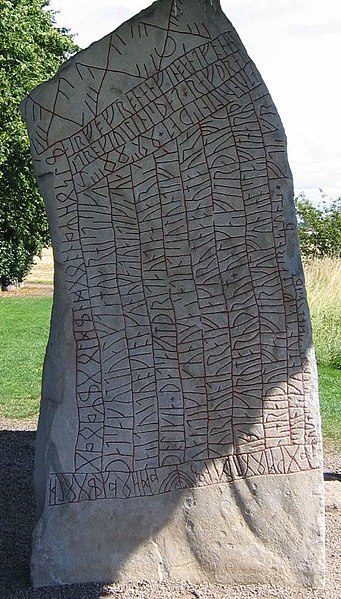Old Norse poetry encompasses a range of verse forms written in the Old Norse language, during the period from the 8th century to as late as the far end of the 13th century. Old Norse poetry is associated with the area now referred to as Scandinavia. Much Old Norse poetry was originally preserved in oral culture, but the Old Norse language ceased to be spoken and later writing tended to be confined to history rather than for new poetic creation, which is normal for an extinct language. Modern knowledge of Old Norse poetry is preserved by what was written down. Most of the Old Norse poetry that survives was composed or committed to writing in Iceland, after refined techniques for writing were introduced—seemingly contemporaneously with the introduction of Christianity: thus, the general topic area of Old Norse poetry may be referred to as Old Icelandic poetry in literature.
The Fyrby Runestone tells in fornyrðislag that two brothers were "the most rune-skilled brothers in Middle Earth."
Drawing of the copper Sigtuna box with a dróttkvætt verse written in the runic alphabet
The Karlevi Runestone contains a dróttkvætt poem in memory of a chieftain.
Old Norse, Old Nordic, or Old Scandinavian is a stage of development of North Germanic dialects before their final divergence into separate Nordic languages. Old Norse was spoken by inhabitants of Scandinavia and their overseas settlements and chronologically coincides with the Viking Age, the Christianization of Scandinavia and the consolidation of Scandinavian kingdoms from about the 8th to the 15th centuries.
The Rök runestone in Östergötland, Sweden, is the longest surviving source of early Old East Norse. It is inscribed on both sides.




